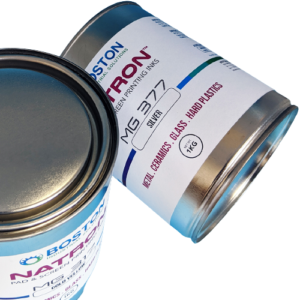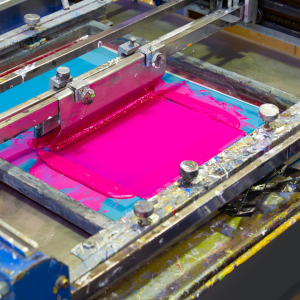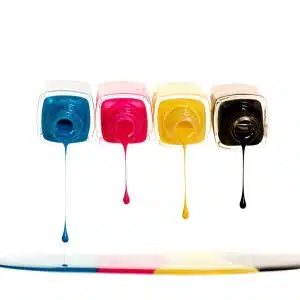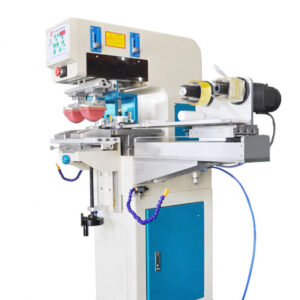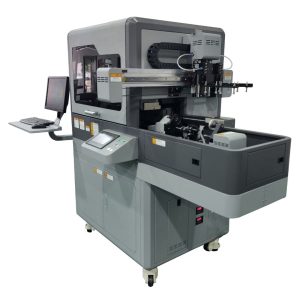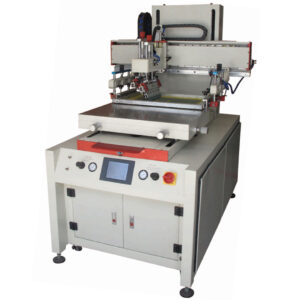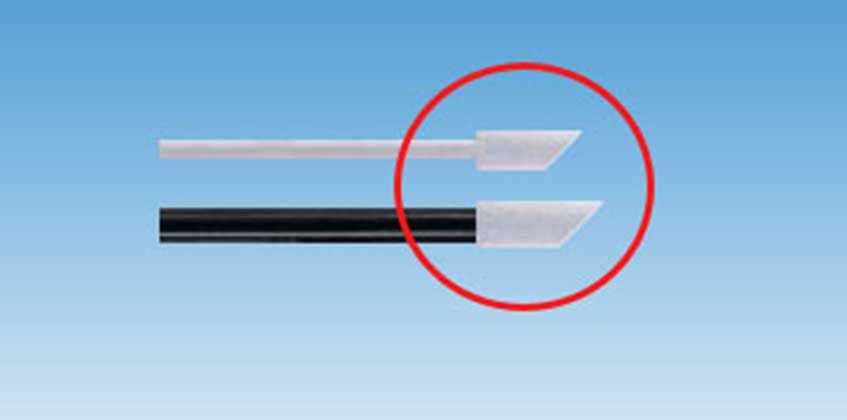The best screen printing and pad printing silicone ink
If you are looking to print on silicone, then you need the best silicone ink in the world. Our high tech silicone inks are the best inks for pad printing, screen printing or spraying to silicone rubber. In some cases these inks have also been adapted by artists to paint on silicone rubber. This shows how versatile the SE series inks are. In this article we are going to cover silicone printing methods. And then show why the Natron SE Series silicone ink is the best screen printing and pad printing silicone ink in the world. But first let’s define screen printing and pad printing.
Screen printing and pad printing definition
Screen printing is a printing technique that uses a mesh to transfer ink onto a substrate. The ink goes through the mesh except in areas made impermeable to the ink by a blocking stencil. Other terms used for screen printing are silkscreen printing, serigraphy, and serigraph printing.
Pad printing is a printing process that can transfer a 2-D image onto a 3-D object. The article Pad printing explained discuses more about it.
You can screen print using a manual process or a machine. Both ways, a squeegee fills an open mesh stencil with ink. Then it reverses the stroke. This causes the screen to touch the substrate. After which the ink is forced through the stencil onto the substrate. While it is possible to print multiple colors, only one color is done at a time.
Related article: Pad Printing Ink
The chemistry of silicone
Silicone, also known as polysiloxane, is a polymer that include any synthetic compound. This polymer is made of repeating units of siloxane, with chain of altering silicone, oxygen, carbon, and hydrogen.
Polymer is a large molecule composed of many repeated sub-units.
Siloxane is the functional group in organosilicon chemistry with the Si–O–Si linkage. Si–O–Si = (Silicone-Oxygen-Silicone)
Silicon is a chemical element with the symbol Si and atomic number 14. It is a hard and brittle crystalline solid with a blue-grey metallic luster. This element is a tetravalent metalloid and semiconductor. By mass, silicon is the 8th most common element. Its melting and boiling points of 1414 °C and 3265 °C. This is the simple chemistry of what silicone is. This make silicone very unique and hard to decorate.
What kind of ink sticks to silicone
Only silicone ink will stick to silicone rubber substrates. This is why silicone is a specialty ink.
Silicone inks:
Silicone inks are not the same as solvent-based inks. Most of the inks require heat to cure. Boston offers two types of silicone inks for silicone rubber. The SE Series and the DC series silicone ink. The SE series is the most used silicone ink in the world. It comes in 36 standard color shades. The colors include transparent, standard colors, neon (fluorescent) and metallic colors. Also, available are mixing colors. You can use the mixing colors to create your own custom colors. We also offer custom silicone ink colors on demand.
This ink also has the highest resistance to scratching and bending. In addition, it is the most compliant ink in the world. It is USP-MEM and CPSIA certified. Additionally, the SE series has highest opacity and gloss compared to any other silicone ink in the market.
DC Series is for printing on heat sensitive silicone products. This ink air cures over time.
Both the SE and DC series can pad printed and screen printed.
Unlike other inks, the SE is the only silicone ink capable of wet on wet silicone printing – an industry first.
Pad Printing Silicone Ink
To print with silicone ink, simply mix the ink with catalyst and solvent. Pour the ink onto an ink cup, and start printing. Th article How to Mix Ink illustrates ink mixing process.
With other inks, you can only pint one color at a time. With the SE Series, you can print wet on wet. We will discuss this later.
If you choose to print one color at a time, you need to have tight registration.
To print good images you need shinny printing pads. This will reduce number of cleanups per job. The article How to clean silicone ink from a pad printing pad discusses this.
Curing time and Temperature
Remember the chemistry of silicone above? This is very important in understanding how to cure silicone inks. The time and temperature to cure inks depends on the density of silicone substrate and not the type ink. An example; it takes shorter time to cure silicone wristband than silicone wallets. In addition, silicone wristbands require less heat compared to silicone wallets. Why? Because of the density of the silicone used. The same is the case for silicone drink-ware. Companies distributing inks do not understand this. And therefore they assume the ink determines the curing time and temperature. This is not true.
Another factor that will affect the curing time of silicone ink is the type of heat. Infra-red (IR) oven or conventional ovens. These types of oven will do, but will affect silicone ink curing time. In short, there is no one set temperature to cure silicone ink. With that said, the SE Series will dry on most silicone products at 275°F (135°C ) for 4 minutes.
The cost to print with silicone ink
Not counting printing plates or pads, the cost of silicone ink is $0.0075 per square inch.
Pad printing plates need to be medium to deep etching. The printing pads need to be shinny and with 65 – 70 durometer hardness. Should you have any technical questions, contact us. We’ll help you out.
Screen Printing Silicone Ink
For Screen printing the operator needs screen with artwork and squeegee. The ink gets spread across the screen. The silicone ink will go through the mesh, i.e. where the stencil is open.
For silicone inks, we recommend 150 – 305 mesh screens. The higher the mesh count the fine the detail you can achieve. We recommend having templates for uniform artwork and increased productivity. In cases of high production volume, we recommend adding Type SS solvent. This will reduce chances of the ink thickening. Pressure on the squeegee should me medium. To clean up screen mesh, use TRM solvent. This will get you back up and running if you encounter any printing problems.
Should I Pad Print or Screen Print on Silicone?
The advantages of pad printing on silicone are:
- pad printing costs less compared to screen printing
- Production space needed to is less,
- It used less ink.
- Possible to do wet on wet printing.
- This method is ideal for printing small logos
- Mixed ink can be stored within the printing cup.
The advantages of screen printing
- Higher opacity – best finish on prints compared to pad printing
- Ability to print on both flat and round cylindrical objects. With pad printing, you are able to do less than 90° objects.
- Screen printing is great for printing large bold logos.
Ultimately, the shape of the number of colors desired and shape of the object to be printed will dictate the printing method.
The best silicone ink
Whichever method you choose, know that Boston‘s Natron SE ink line is the best silicone ink for Screen printing and pad printing. Here are a couple reasons why the SE Series is the best silicone ink for screen printing and pad printing.
- 36 standard colors, three times as many as the next competing ink line
- Available 12 mixing colors
- The only silicone ink line with metallic and neon colors
- Highest opacity compared to other silicone inks
- High gloss finish on prints
- The SE series has been awarded two certifications
Lean more about available Solvents and Catalysts for Silicone ink


